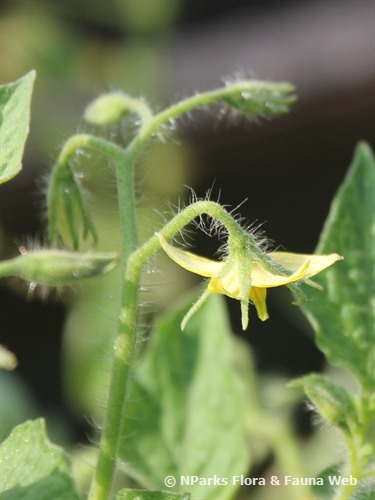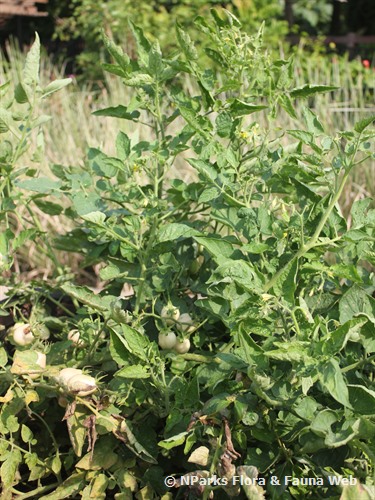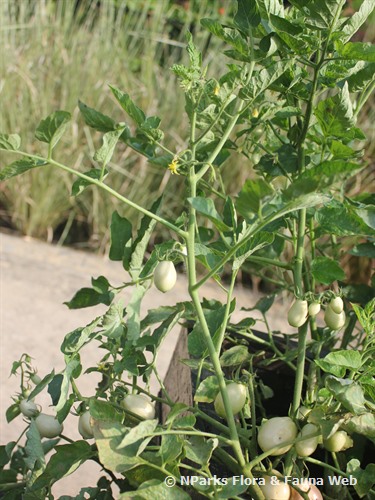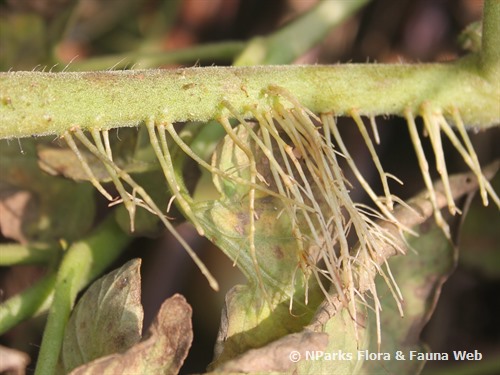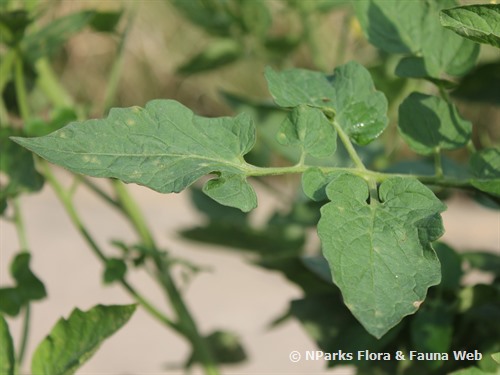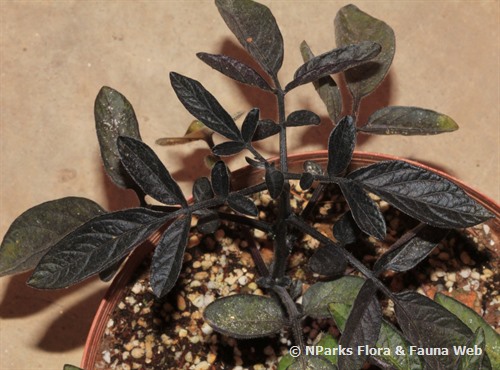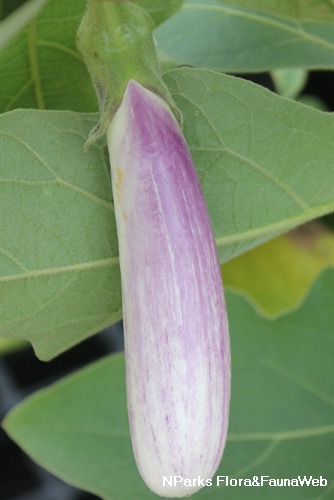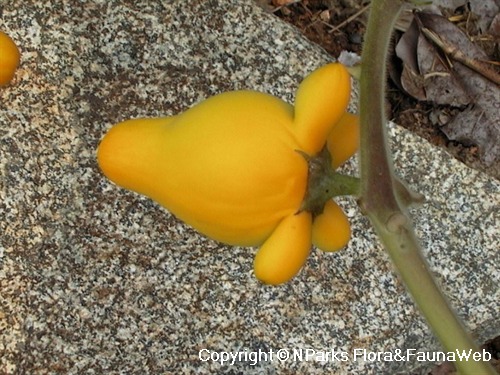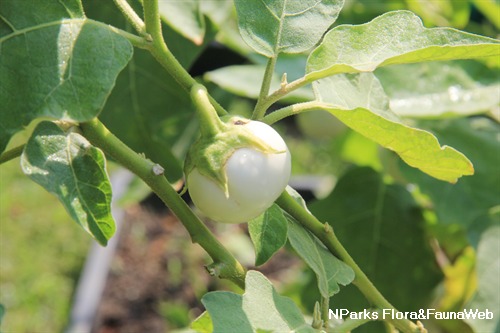
Back
Solanum lycopersicum 'Thai Pink Egg'
| Family Name: | Solanaceae |
| Synonyms: | Lycopersicon esculentum 'Thai Pink Egg' |
| Common Name: | Grape Tomato |
Name
Classifications and Characteristics
| Plant Division | Angiosperms (Flowering Seed Plants) |
|---|---|
| Plant Growth Form | Herbaceous Plant |
| Lifespan (in Singapore) | Annual |
| Mode of Nutrition | Autotrophic |
Description and Ethnobotany
| Growth Form | Bushy herbaceous plant up to 1.5 m tall. |
|---|---|
| Fruit | This cultivar produces a large crop of grape tomatoes up to 4 cm long. Immature, white tomatoes eventually turn light pink. |
| Cultivation | This cultivar is well-adapted for hot, humid climates with lots of rain. It is bred to be disease resistant with fruit that doesn't crack. Seeds should be sown 0.5 cm deep in a loose mix designed for seeds, and germination will occur in 1-2 weeks. Seedlings should be transplanted 50 cm apart in fertile, well-drained soil and side shoots should be removed by pinching. It will form a bushy plant up to 1.5 m tall, but it needs to be staked. Tomatoes are ready to harvest 9-11 weeks after sowing. |
| Ethnobotanical Uses | Edible Plant Parts : Edible Fruits, Edible Seeds Food (Fruit or Vegetable): The sweet, grape tomatoes are ideal for curries, salads and sandwiches. |
Plant Care and Propagation
| Light Preference | Full Sun |
|---|---|
| Water Preference | Moderate Water |
| Propagation Method | Seed |
Foliar
| Foliage Retention | Evergreen |
|---|---|
| Mature Foliage Colour(s) | Green |
Floral (Angiosperm)
| Flower & Plant Sexuality | Bisexual Flowers |
| Flower Colour(s) | Yellow / Golden |
|---|---|
| Flower Texture(s) | Wrinkled |
| Flower Grouping | Cluster / Inflorescence |
| Flower Location | Terminal |
| Flower Symmetry | Radial |
Fruit, Seed and Spore
| Mature Fruit Colour(s) | Pink |
|---|---|
| Mature Fruit Texture(s) | Smooth, Glossy / Shiny |
| Fruit Classification | Simple Fruit |
| Fruit Type |
Image Repository
Others
| Master ID | 33115 |
|---|---|
| Species ID | 7529 |
| Flora Disclaimer | The information in this website has been compiled from reliable sources, such as reference works on medicinal plants. It is not a substitute for medical advice or treatment and NParks does not purport to provide any medical advice. Readers should always consult his/her physician before using or consuming a plant for medicinal purposes. |

